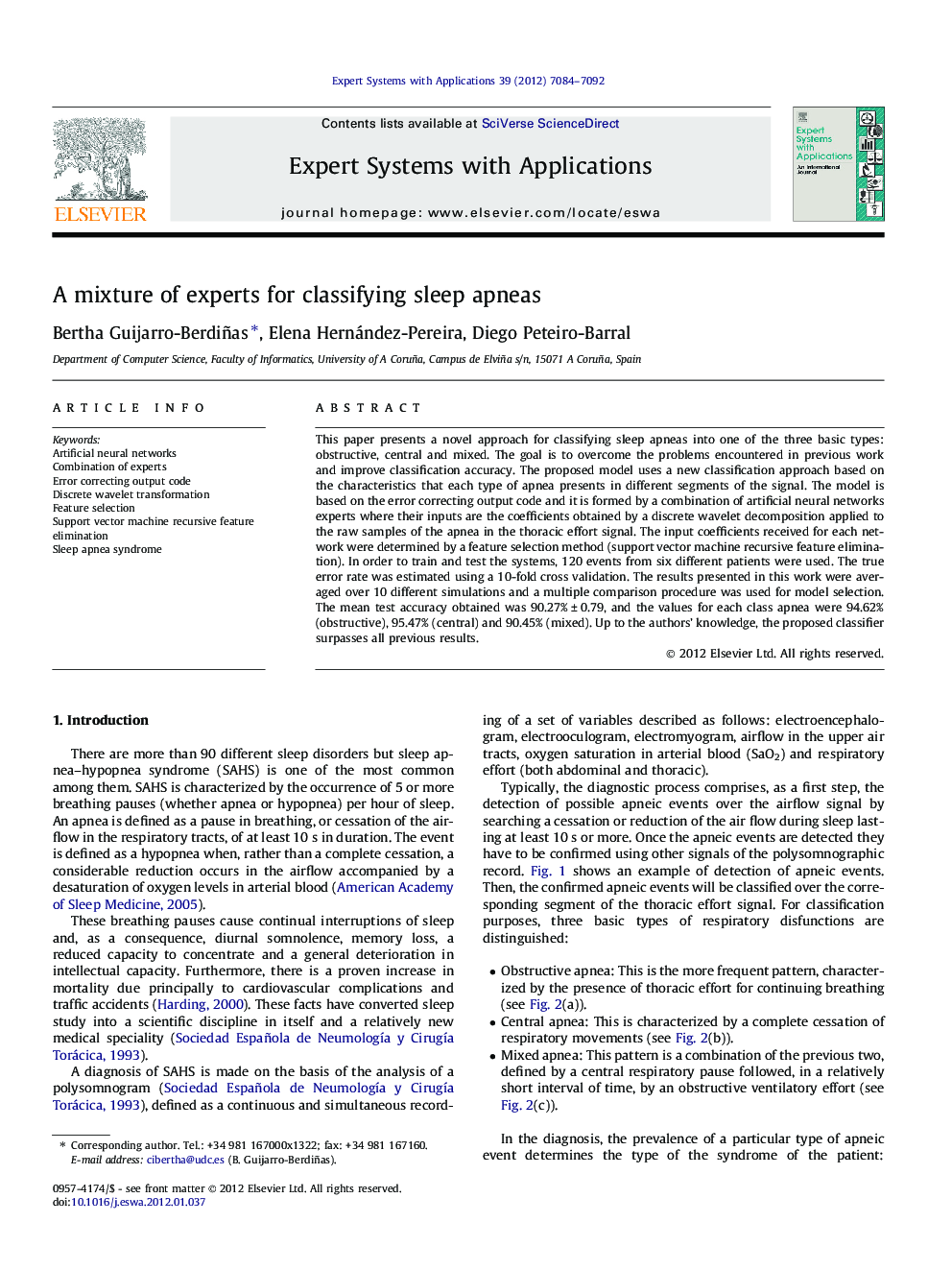| کد مقاله | کد نشریه | سال انتشار | مقاله انگلیسی | نسخه تمام متن |
|---|---|---|---|---|
| 384389 | 660846 | 2012 | 9 صفحه PDF | دانلود رایگان |

This paper presents a novel approach for classifying sleep apneas into one of the three basic types: obstructive, central and mixed. The goal is to overcome the problems encountered in previous work and improve classification accuracy. The proposed model uses a new classification approach based on the characteristics that each type of apnea presents in different segments of the signal. The model is based on the error correcting output code and it is formed by a combination of artificial neural networks experts where their inputs are the coefficients obtained by a discrete wavelet decomposition applied to the raw samples of the apnea in the thoracic effort signal. The input coefficients received for each network were determined by a feature selection method (support vector machine recursive feature elimination). In order to train and test the systems, 120 events from six different patients were used. The true error rate was estimated using a 10-fold cross validation. The results presented in this work were averaged over 10 different simulations and a multiple comparison procedure was used for model selection. The mean test accuracy obtained was 90.27% ± 0.79, and the values for each class apnea were 94.62% (obstructive), 95.47% (central) and 90.45% (mixed). Up to the authors’ knowledge, the proposed classifier surpasses all previous results.
► We develop a model for classifying sleep apneas as obstructive, central or mixed.
► The thoracic effort signal transformed by discrete wavelet decomposition is used.
► The model is based on error correcting output code and a mixture of neural networks.
► We determine the borderline between an obstructive and central part of a mixed apnea.
► Classification accuracy was 90.27% (94.62% obstructive, 95.47% central, 90.45% mixed).
Journal: Expert Systems with Applications - Volume 39, Issue 8, 15 June 2012, Pages 7084–7092